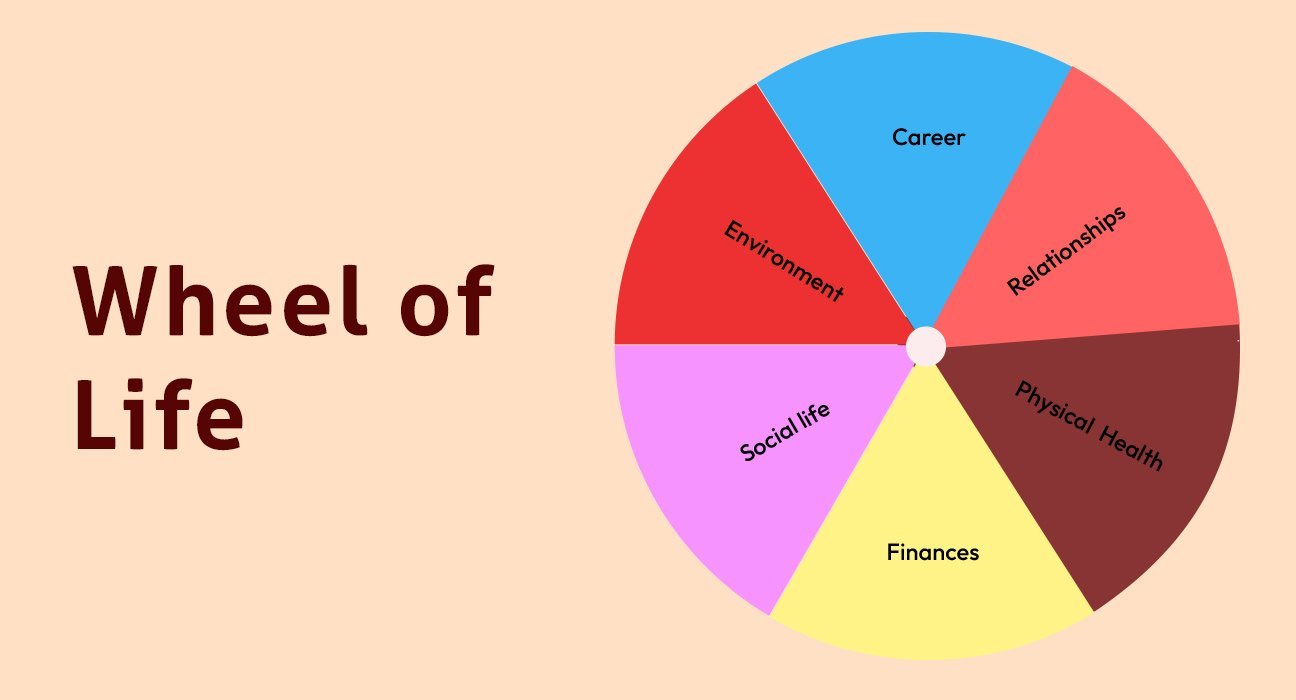In the fast paced world we live in, achieving a balanced and fulfilling life can be a challenging task. The Wheel Of Life is a popular psychological tool and a coaching exercise used to help individuals assess and balance various aspects of their lives. This holistic model provides a visual representation of different life domains, aiding individuals in identifying areas that need attention and setting goals for improvement.
Understanding the Wheel of Life
In our world, where progress is very swift, balancing a fulfilling life may be daunting. Wheel Of Life is one famous psychological tool and coaching exercise used to help individuals assess and balance various aspects of their lives. The Wheel of Life as a holistic model visualizes different domains in one’s life that helps an individual identify areas requiring attention and goals for improvement.
The Wheel of Life is a flexible and lively utility whose popularity in psychology and coaching has exploded. The wheel of life had its beginnings during the 1960s era. Paul J. Meyer, who paved the way for personal development initiatives, often connects with some early ideas related to life assessment tools. One precursor to today’s wheel of life was his Personal Success Planner created in the 1960s.
More recently, in the 2000s, the concept became more mainstream. With increase in number of coaches, online resources and self-help books being published on this topic called Wheel Of Life which became widespread as a practical as well as visual tool used for assessing one’s life. The Wheel of Life changes with time according to new trends in the personal development and consulting services landscape. Various practitioners, coaches and psychologists contribute to its ongoing refinement, creating customized versions to suit different needs and preferences.
Also Read: 10 Life Hacks to Slay Hard Times
Components of the Wheel of Life
This self-assessment and goal-setting technique involves creating a wheel divided into sections. Wheel of Life is a pie chart, each slice represents a value or relationship that holds importance in most people’s life. It generally has 8 sections or areas that are considered essential to lead a balanced life. Most commonly used topics are career, family and friends, health, personal growth, money, fun & leisure, home environment, security, community/spirituality. Each of these domains plays a crucial role in shaping an individual’s overall well-being.
- Career: Assessing satisfaction and progress in one’s professional life, the career component focuses on job satisfaction, career growth and work life balance.
- Finances: Evaluating financial well being, this component includes factors such as income, savings and financial stability.
- Health: Concentrating on physical well being, the health component encompasses exercise, nutrition and overall health.
- Relationships: This domain explores the quality of relationships with family, friends and significant others.
- Personal Development: Focusing on personal growth and self-improvement, this area includes activities such as education, skill development and hobbies.
- Spirituality: Reflecting on one’s connection to a higher purpose or belief system, the spirituality component encompasses mindfulness and inner peace.
- Social life: Examining satisfaction in social interactions and friendships, this section considers the importances of a supportive social network.
- Recreation/Leisure: This section involves activities that bring joy and relaxation, contributing to overall life satisfaction.
- Environment: Considering the impact of physical surroundings on well being, the environment component involves the living environment and overall surroundings.
- Community: Reflecting on one’s contribution to the community or a larger purpose, this sector volunteers and makes a positive impact.
Creating a Balanced Life:
The wheel consists of eight categories into ten slots (from one to ten) and ranks each area by adding a dot on the relevant number for each category. One will be close to the center of the circle, and then will be at the edge of the circle.
Also Read: No Health without mental health: Part and Parcel of life
Note that sections or categories above are just an example. Therefore, the name and number of the areas or categories can change and vary based on priorities and what areas are most important in your life. Once you’ve reviewed the wheel as a whole, join the dots. This will give you a snapshot of your life, allow you to identify your weaknesses, draft a plan of action to create a more balanced wheel and track your progress.
How to use the Wheel of Life
Using the wheel of life for self reflection is a straightforward yet powerful process that allows individuals to gain insight into various aspects of their lives and identify areas for improvement. Here is a step-to-step guide on how to effectively use the Wheel of Life:
1. Create your Wheel:
Start by drawing your own version of a Wheel of Life, complete with sections that represent different aspects of your life according to your priorities, such as career, finances, health, relationships, personal development, spirituality, social life, family life, environment, and community.
Or, use one of the many apps or online tools that give you a Wheel template that you can adapt.
2. Think about each area:
Next, go through each segment of the wheel, and – on a scale of 1-10 – decide how satisfied you are with that area of your life. One represents an area that’s not fulfilling for you (at all), while 10 is the highest state of satisfaction you can think of.
3. Reflect on your scores:
Once you have rated each area, take a moment to reflect on your scores. Identify areas where you are most satisfied and areas where there is room for improvement. Consider how each area contributes to your overall well-being and quality of life.
4. Identify patterns and imbalances:
Look for patterns or imbalances in your scores. Are there certain areas where you consistently rate lower? Are there areas that you neglect or prioritise over others? Identifying these patterns can help you understand where you may need to focus your attention and efforts.
Also Read: Happiness Hues: Painting Your Life with Positivity
5. Set goals for improvement:
Based on your reflections & insights gained from the wheel of life, set Specific, Measurable, Achievable, Relevant and Time-bound (SMART) goals for improvement in each area. Consider what changes or actions you can take to increase satisfaction and balance in your life
6. Create a plan of action:
Develop a detailed action plan for each goal, outlining the steps you will take to achieve it. Break down your goals into small steps and set deadlines for each task. Consider enlisting support from friends, family or professionals to help you stay accountable and motivated.
7. Review & Adjust
Regularly review your progress and reassess your priorities using the Wheel of Life. Adjust your goals and action plan as needed based on changes in your circumstances or priorities. Celebrate your successes and learn from any setbacks or challenges encountered along the way.
By using the Wheel of Life, you can gain valuable insights into different areas of your life and take proactive steps to create greater balance, fulfilment and well-being.
Reference+
- (https://themindfool.com/use-the-wheel-of-life-to-find-balance-in-life/)
- (https://psychology-spot.com/wheel-of-life-template-technique/#google_vign ette)
- (https://www.schoolofcoachingpsychology.com/post/the-wheel-of-life-a-psyc hologically-informed-coaching-tool)
- (https://productive.fish/blog/wheel-of-life/)













Leave feedback about this